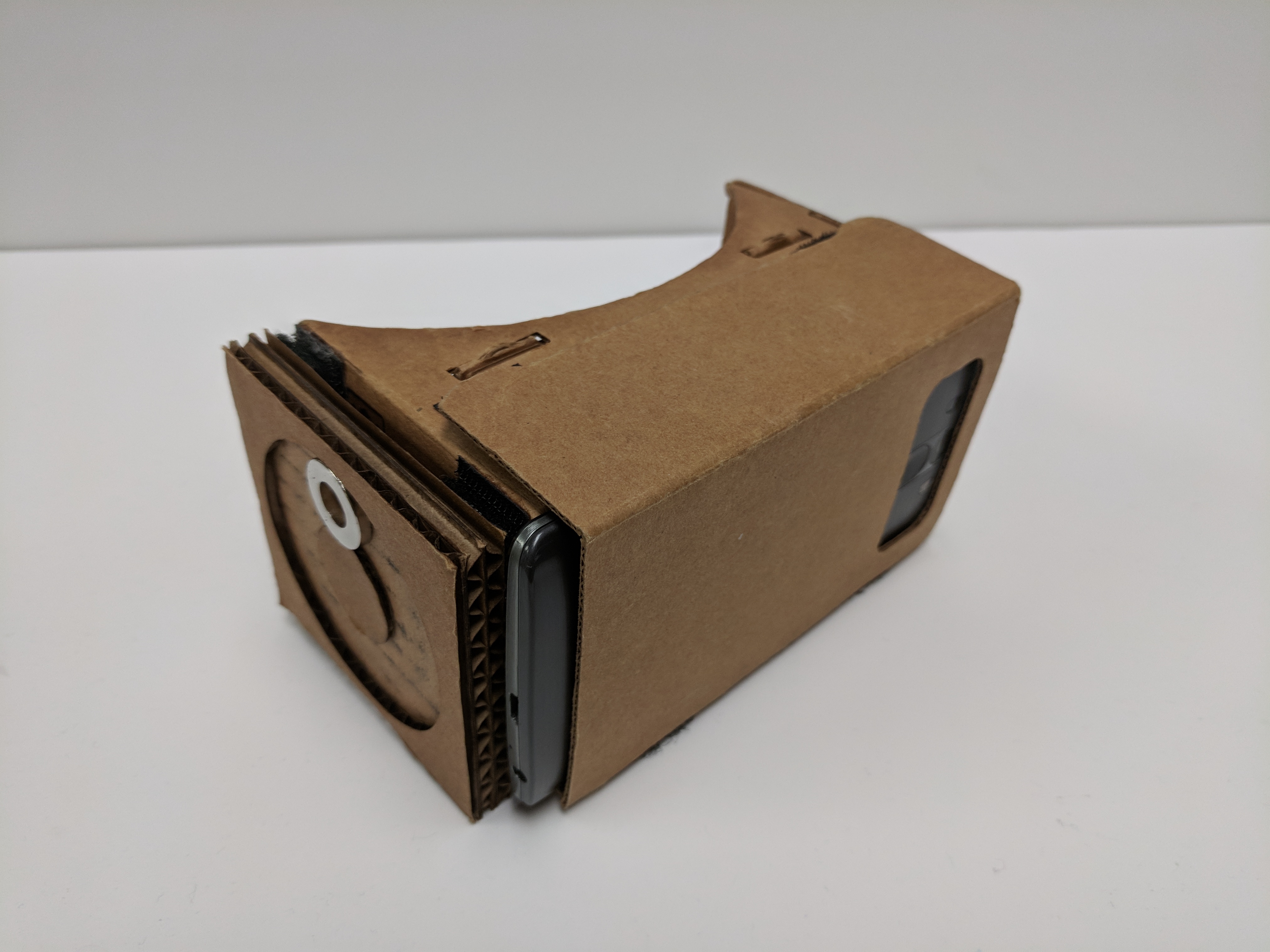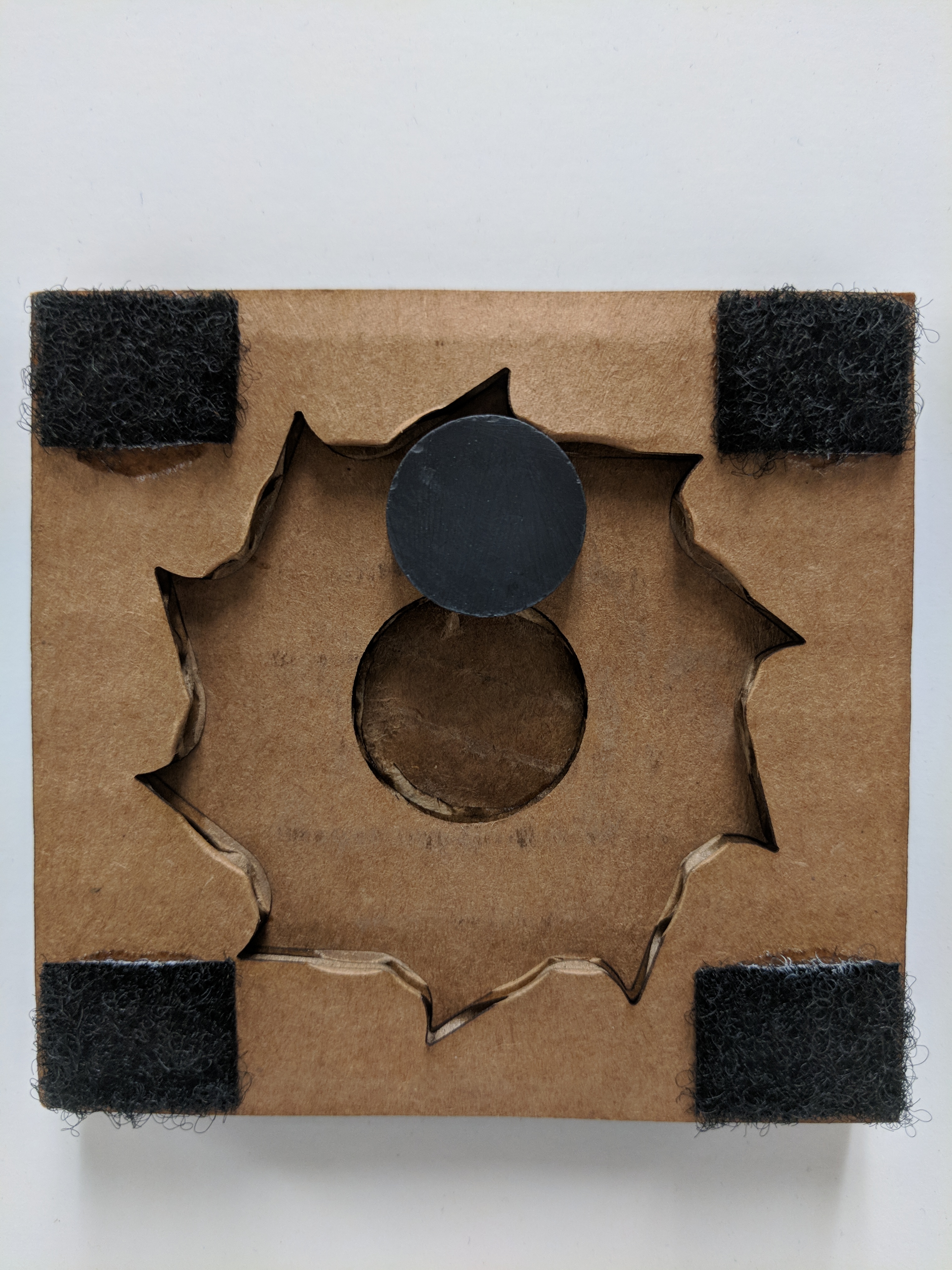
ScratchVR
Low-cost mobile virtual reality (VR), like the Google Cardboard, is limited in regards to what you can do/interact with, because they do not have controllers. Besides moving the head to look around, the Google Cardboard v1 has one magnet button mechanism for simple selections. The project, ScratchVR, was an exploration into providing more interactions for input into VR. It provides bidirectional scrolling input as well as discrete selection input.
The original intention was to recognize acoustic signatures of distinct textures. I did a lot of prototyping and 3D-printed several textures to do audio analysis on. We ended up switching to repurpose the magnetic components of the Cardboard v1 and created a custom cardboard enclosure. This way, we could use commodity sensing on smartphones, particularly the magnetometer, to recognize the position of the magnet in our interface. In the enclosure, there is an inner and outer circular track. The outer track has a magnetized washer that users can slide along the track. The inner track is made up of a series of ridges, and a magnet is dragged along the ridges when the user slides the washer on the outside.



I tested and implemented algorithms for tracking the position of the magnet. I also conducted user studies to evaluate our system compared to the standard "gaze" practice of VR. Because the interface was made of cardboard, I built an automatic rig that would spin the washer in different directions and durations of time to evaluate the robustness of the material and system.
--
Richard Li, Victor Chen, Gabriel Reyes, and Thad Starner. 2018. ScratchVR: low-cost, calibration-free sensing for tactile input on mobile virtual reality enclosures. In Proceedings of the 2018 ACM International Symposium on Wearable Computers (ISWC '18). ACM, New York, NY, USA, 176-179. DOI: https://doi.org/10.1145/3267242.3267260